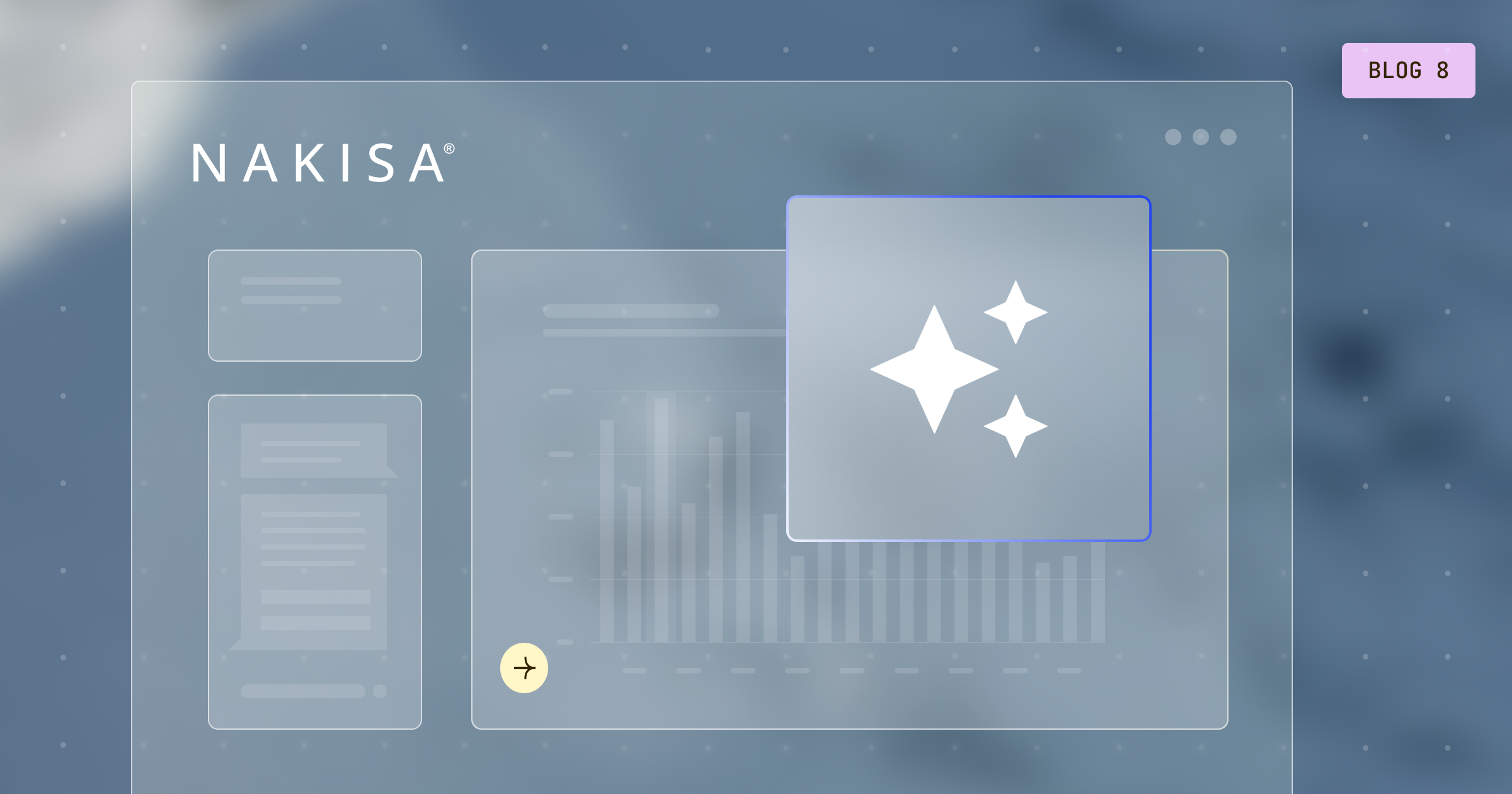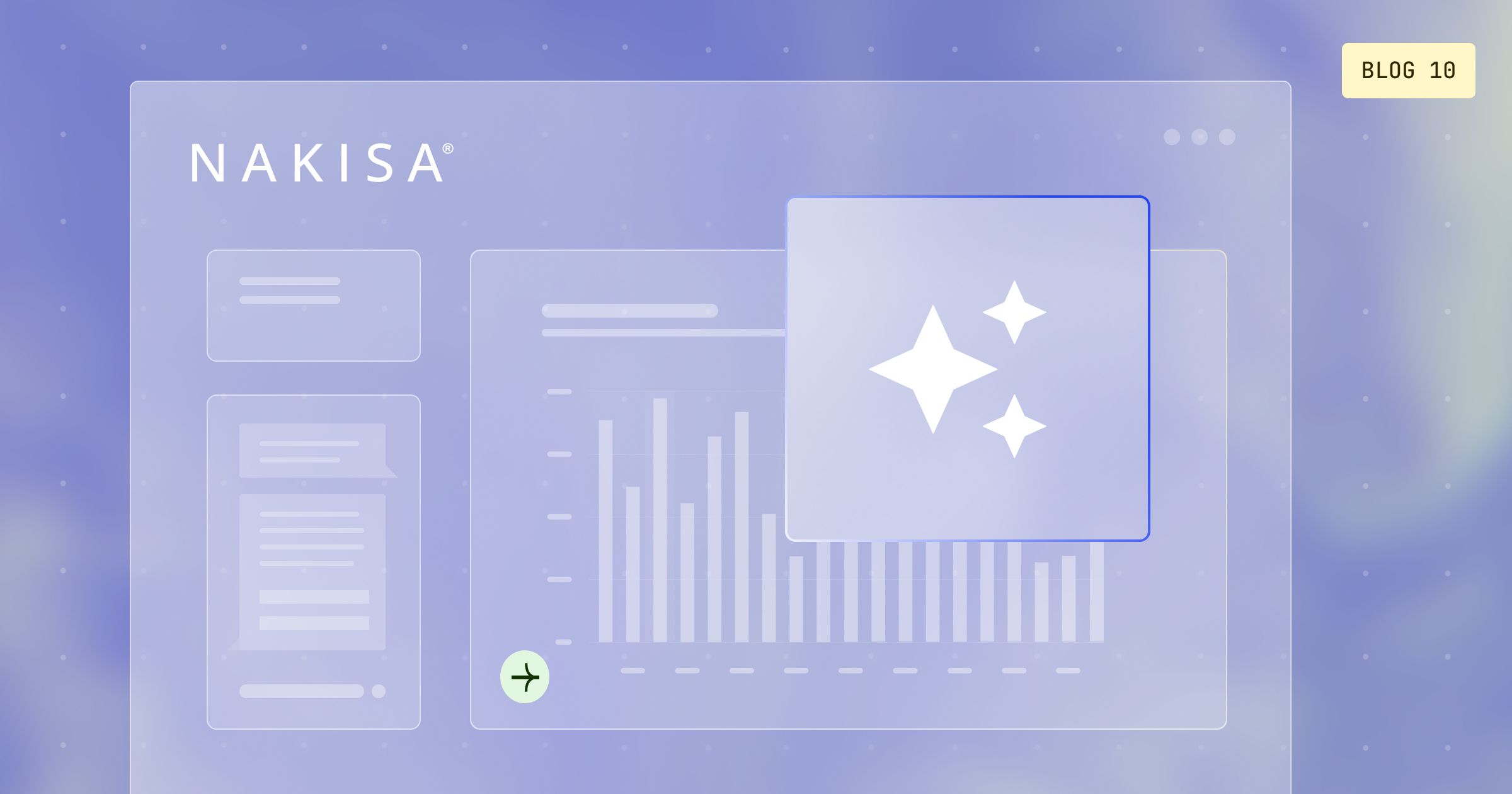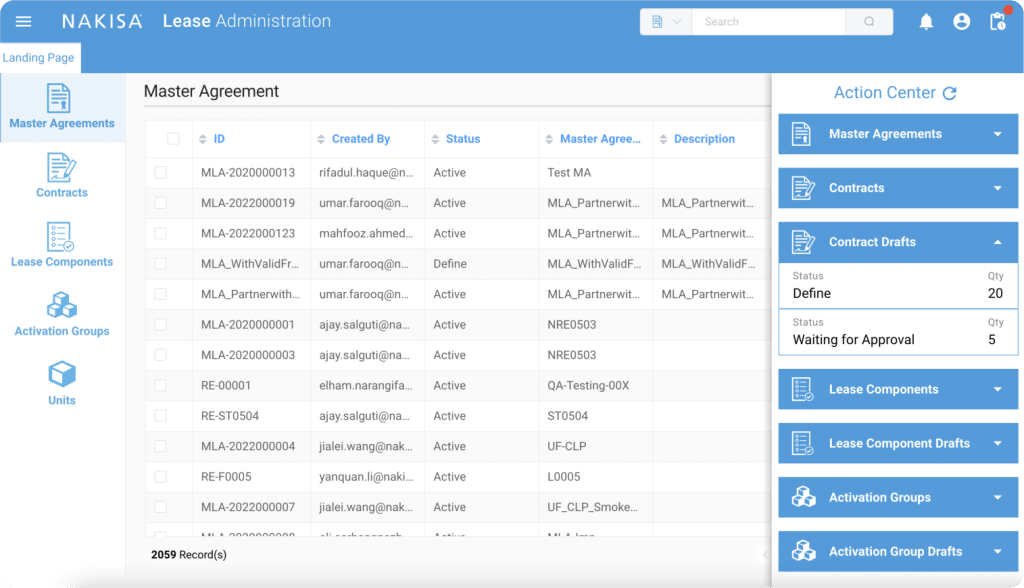How context and instruction shape the behavior of Nakisa Decision Intelligence (NDI)
1. Context Memory: the power and peril of continuity
Every NDI session carries a kind of conversational memory. It “remembers” previous exchanges not in a human emotional sense, but in a logical one. The Context Memory allows NDI to maintain continuity across a discussion, referring back to earlier assumptions, data points, or goals.
When used thoughtfully, this memory creates a smooth, human-like dialogue. It allows users to build on prior questions rather than starting over with every interaction.
However, there’s a trade-off. Context Memory also makes NDI sensitive to ambiguity. If the initial question was incomplete or inconsistent, those gaps carry forward. Each new step compounds the earlier uncertainty. In other words, NDI’s reasoning is context-dependent: the quality of its answers is shaped by the clarity of its history.
In practical terms, Context Memory is both a superpower and a mirror. It reflects back the quality of the conversation it’s given.
2. Instruction Strictness: the role of prompt precision
The second key factor shaping NDI’s behavior is Instruction Strictness. The degree of clarity, precision, and constraint in how a user frames a question.
When a prompt is broad or exploratory, NDI has the latitude to interpret intent and connect multiple dimensions of insight. It may analyze existing data, combine qualitative understanding, and surface recommendations that go beyond a single metric.
For example:
What can I do to improve my team’s work satisfaction?
This open-ended prompt invites NDI to explore several avenues, including employee feedback trends, management practices, workload balance, recognition mechanisms, and even comparative benchmarks. NDI will reason across known patterns and contextual data to generate evidence-based, interpretive insights such as:
- Increase recognition frequency from yearly to quarterly,
- Rebalance workloads from uneven task allocation to role-aligned distribution, and
- Formalize engagement reviews from ad-hoc discussions to scheduled quarterly sessions.
These shifts align with the strongest predictors of satisfaction in comparable teams.
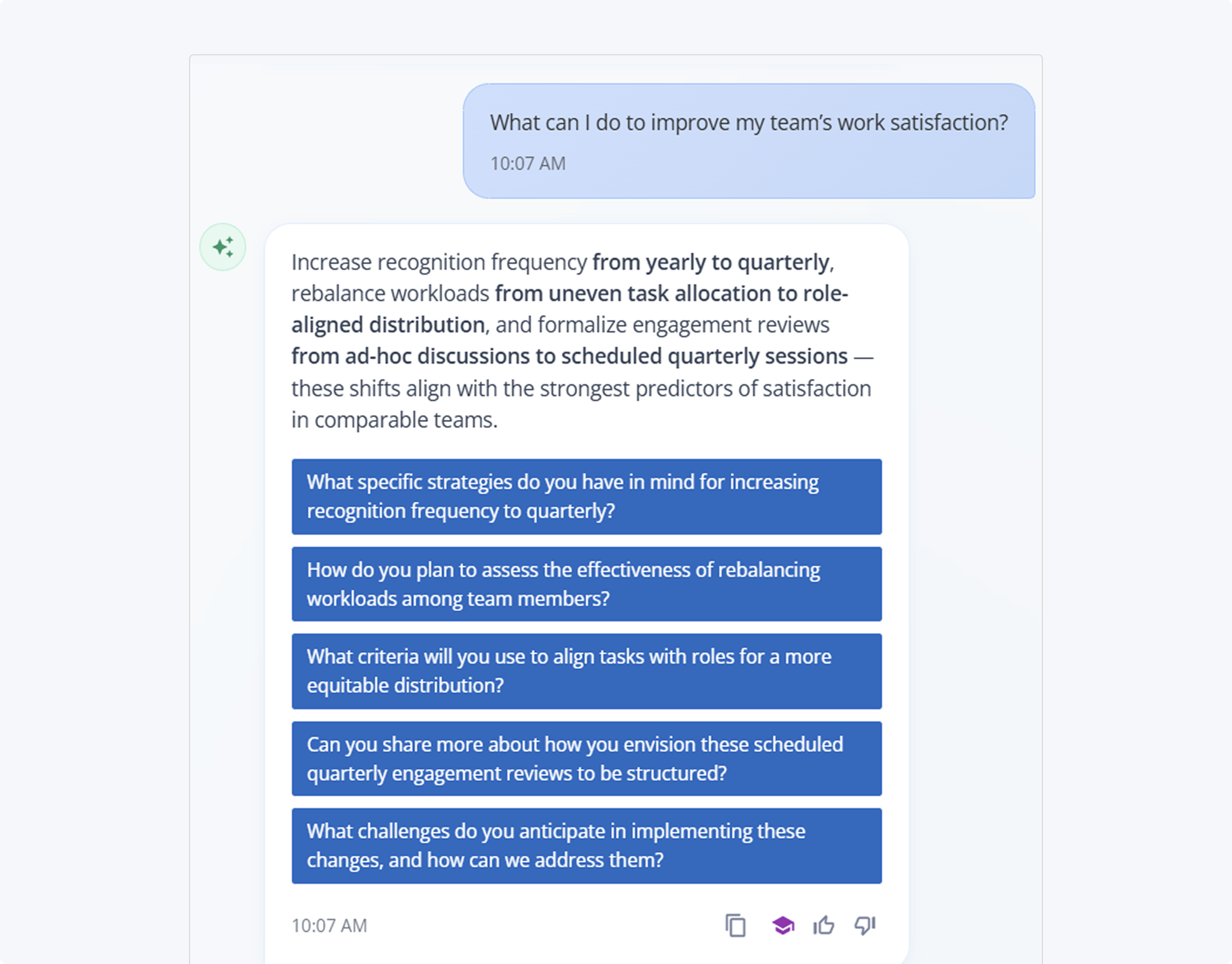
By contrast, a strict and precise prompt focuses NDI on a specific, deterministic fact or calculation:
How many high performers have left in the last six months?
Here, NDI’s task is narrow and procedural. It will locate and aggregate data, confirm parameters (such as defining “high performer” and the relevant time frame), and report an exact figure. There is no interpretation, only validated retrieval and computation.
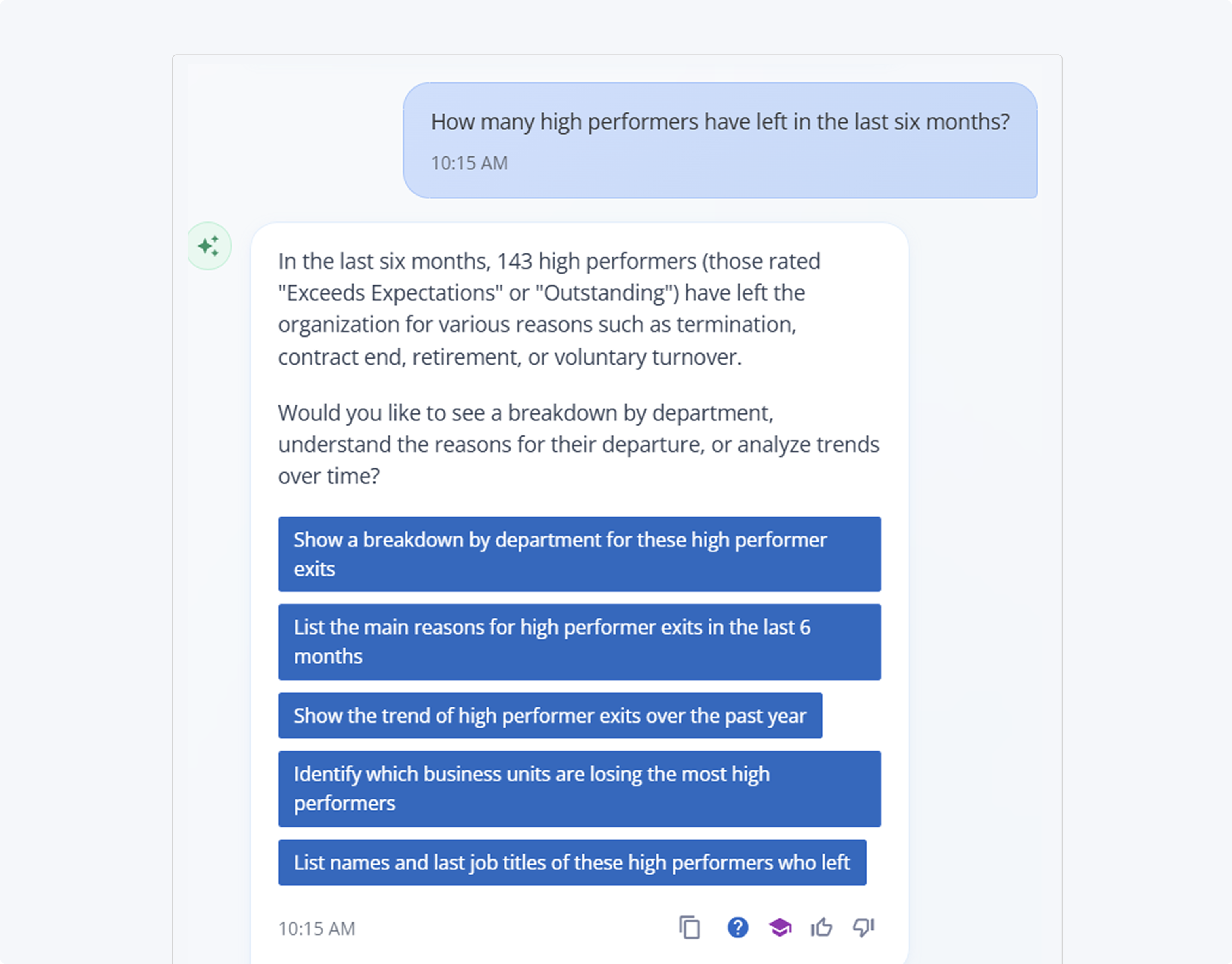
In other words:
- A broad prompt allows for reasoning and synthesis.
- A precise prompt ensures precision and repeatability.
Both modes are essential. Instruction Strictness simply determines which mode NDI activates: creative analysis or procedural execution, ensuring that the system behaves appropriately, delivering insights grounded in verified data and contextual understanding.
3. Dilemma: the storyteller and the explorer
In enterprise AI design, it’s tempting to imagine one “right” way for intelligent systems to behave. Always precise, always certain, always complete. But real-world decision-making doesn’t unfold that neatly. It requires both clarity and curiosity, both structure and discovery.
This is where NDI’s dual nature comes into focus. It can operate as either a Storyteller or an Explorer.
Storyteller mode: staying true to the narrative
In storyteller mode, NDI follows a clearly defined path. It ensures that every answer is grounded in verified data, aligned with established processes, and consistent with the narrative that the user or organization has already defined.
This mode is essential for tasks where precision, compliance, and reproducibility matter most: financial calculations, audit-ready reports, or performance metrics. The Storyteller ensures the facts stay straight, the storyline stays intact, and nothing is invented or assumed.
It’s how NDI builds trust by speaking with consistency, accuracy, and discipline.
Explorer mode: discovering new angles
In explorer mode, NDI steps beyond the fixed storyline to help users uncover new possibilities. It connects signals, infers patterns, and interprets context, not by fabricating data, but by reasoning across what’s known to reveal what could be.
Ask a question like:
We’re considering moving our Singapore office to a hybrid work model. What are the potential risks and benefits?
And NDI, as an Explorer, may respond:
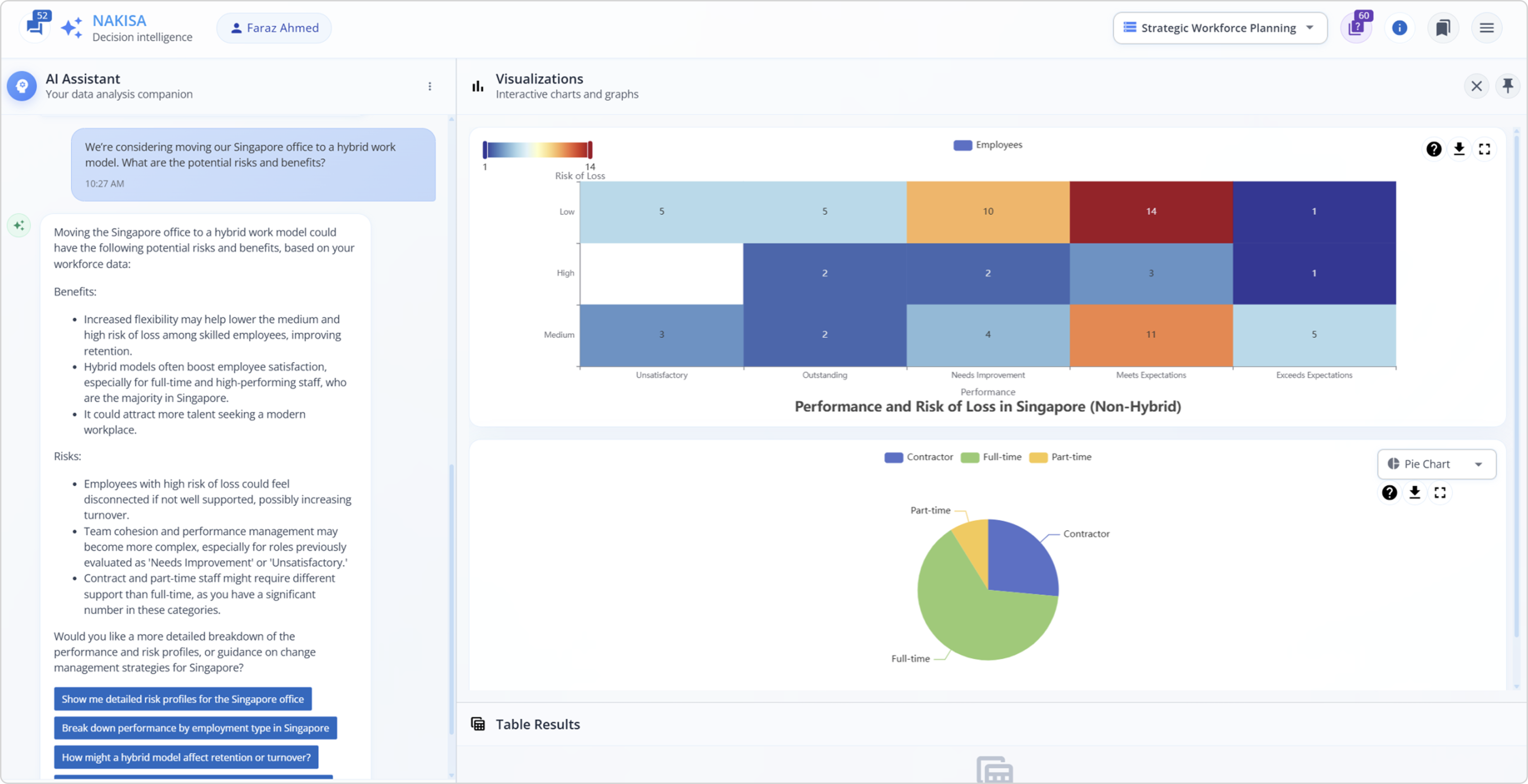
Here, the goal isn’t to produce a number; it’s to offer perspective. The Explorer connects knowledge and context to create strategic understanding rather than procedural output.
Balance: when story meets exploration
Both modes are indispensable.
- The Storyteller keeps reasoning anchored in facts, structure, and continuity.
- The Explorer ensures that insight evolves, adapts, and inspires action.
Together, they form the full intelligence of NDI, one that can stay on the story when needed and explore when it matters.
The art of effective decision intelligence lies not in choosing one over the other, but in knowing when to let each lead.
4. Finding the balance: the dual DNA of decision intelligence
To realize its full potential, NDI must operate with two complementary intelligences, that of the Storyteller and the Explorer. Each serves a distinct but equally vital purpose in how decisions are shaped, validated, and acted upon.
The Storyteller keeps reasoning anchored in facts, structure, and continuity. It ensures that insights align with verified data, established frameworks, and organizational standards. This mode safeguards accuracy and coherence; it’s what keeps the narrative stable.
The Explorer, by contrast, ensures that insight evolves, adapts, and inspires action. It connects context, identifies unseen relationships, and imagines new paths forward. This is where creativity and strategic foresight emerge, not from speculation, but from intelligent pattern recognition and contextual reasoning.
The strength of Decision Intelligence lies in knowing when to let each mode lead.
NDI’s real power is not in choosing between these modes, but in shifting seamlessly between them. It’s not about teaching AI to think like a calculator, but teaching it to think with us, combining the reliability of structured logic with the vision of adaptive reasoning.
That synthesis, of storytelling and exploration, is what transforms data into intelligence, and intelligence into decisions that move organizations forward.
5. The broader lesson: designing for human-like judgment
Decision Intelligence is not about removing uncertainty. It’s about reasoning through it.
In the end, this discussion is not only about NDI; it is also about the evolution of AI itself. We are moving beyond command-based interfaces toward cognitive collaboration, where systems participate in the reasoning process rather than merely executing instructions.
That evolution demands balance. An AI that only asks for data is sterile. An AI that only speculates is unreliable. True decision intelligence lives in the middle, where structure meets intuition.
For those interested in the technical mechanisms behind reducing ambiguity and avoiding erroneous outputs. I’ve previously explored those in detail in my article on bridging ballucination and precision in large language models. I often write about AI and Nakisa innovations. Connect with me on LinkedIn for the latest updates!
You can request a demo of NDI here, or reach out to your dedicated Client Success Manager to access the preview environment.

